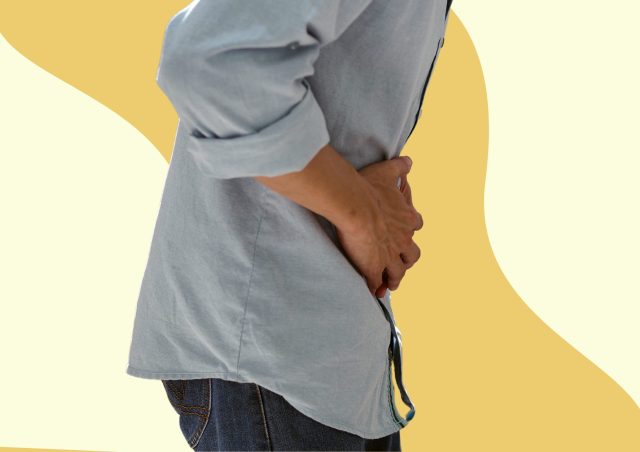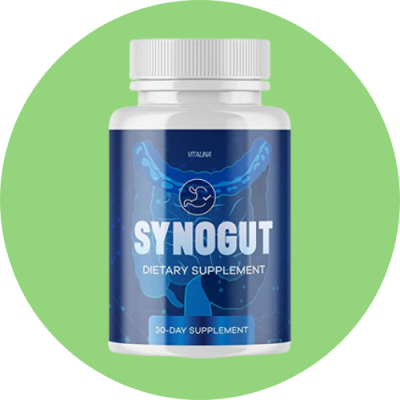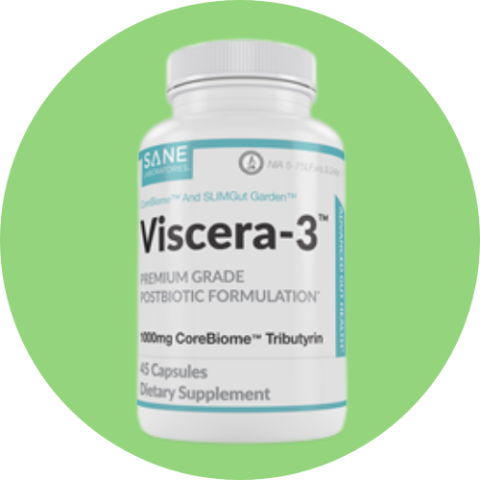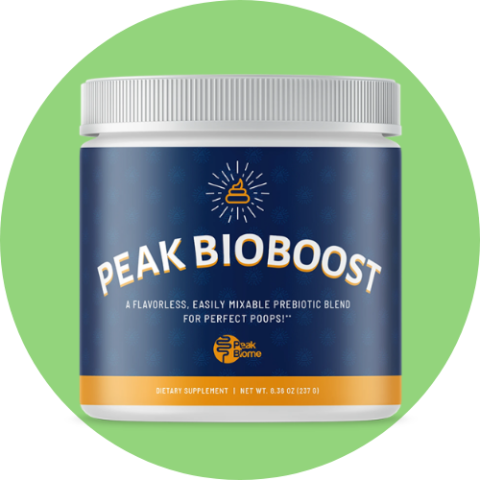8 Common Causes Of Lower Right Abdominal Pain: Complete Guide 2024
By Vanessa Richards
January 10, 2024 • Fact checked by Dumb Little Man

Lower right abdomen pain can occur due to several serious medical conditions, such as kidney infection, inflammatory bowel disease, indigestion, irritable bowel syndrome (IBS), and gas.
There are many probable causes for severe abdominal pain on the right side. More often, lower right abdominal pain is not a concerning condition as it goes away within one to two days on its own.
If you experience severe pain persistently, you must not waste time and consult a physician immediately. When you seek medical attention, your symptoms get rightly assessed by healthcare professionals. Indeed, pain in the lower right abdomen needs medical attention to make a proper diagnosis.
Is Lower Right Abdominal Pain An Emergency Situation?
If you are suffering from pain in your lower right abdomen, you might be in need of medical attention.
Mostly, lower right abdominal pain isn't a life-threatening condition. However, you must consider taking medical help in case you are suddenly having severe pain in the lower abdomen. Again if you get sudden right abdominal pain or any other symptoms, it is better to consult a doctor.
- Pressure in the chest
- Chest pain
- Feel pain in the neck, arm or jaw
- Breathing problem
- Lightheadedness or dizziness
- Fever
- Sweating
- Blood in the vomit or stool
- Black stool
- Persistent feelings of vomiting and nausea
- Severe tenderness to the lower abdomen
- Jaundice
- Unusual abdominal swelling
- Loss of appetite
If you notice any of these symptoms persist, visit your nearest medical emergency room.
Treatment can prevent these common symptoms from turning into life-threatening conditions.
8 Common Cause Lower Right Abdominal Pain
1. Appendicitis
An appendix is a very tiny, thin tube attached to the large intestine of our body. Appendicitis occurs when the appendix gets inflamed, which causes pain in the lower abdomen.
You may suddenly experience abdominal pain, which gradually increases when you breathe or do any movement.
Apart from this, other symptoms include:
- Nausea and vomiting
- Loss of appetite
- Fever
- Swelling of the lower abdomen
- The problem with bowel movement or unable to pass gas
Appendicitis requires immediate supervision of a healthcare provider as the inflamed appendix can burst. This can further invite other life-threatening conditions.
While antibiotics are helpful to clear some appendicitis cases, others may need to undergo surgery to eliminate the appendix, called an appendectomy.
2. Intestinal Gas
Intestinal gas is actually air and other gases that remain or come out of the digestive tract. It is usually a result of unbroken food that you swallow. Undigested food produces more gas in the body. As it builds up, intestinal gas gives a feeling of bloating and tangling in the stomach. Furthermore, this causes lower right abdominal pain.
Burping and flatulence work as pain relievers for pain in the lower abdomen. In fact, it is quite natural for an individual to pass gas (fart) up to 30 times a day.
This doesn't mean excessive gas passing is not a matter of concern. Often lower right abdomen pain can be a symptom of lactose intolerance, irritable bowel syndrome, or gastroesophageal reflux disease (GERD).
Intestinal gas can even occur from time to time, especially when you gulp more air due to smoking, chewing gum, or overeating.
3. Irritable bowel syndrome (IBS)
Irritable bowel syndrome (IBS) is a common medical condition that has a long-term effect on the digestive system. It is increasingly growing among the people and causing problems. Irritable bowel syndrome causes:
- Lower abdominal pain
- Changes in bowel movements in the form of constipation, diarrhea, bloating, etc.
- A feeling of incomplete bowel movements
- Mucus in the stool
The exact causes of irritable bowel syndrome are still under wrap. However, it appears to have a close interaction with the gut and the brain.
4. Hernia
A hernia occurs when a body part pushes through the muscle or lining that keeps it in place. Most types of hernias happen in the abdominal region. Also, this causes discomfort and persistent abdominal pain. One of the common types of hernia is the Inguinal hernia.
There are other symptoms of hernias include:
- Swelling of belly
- Pain while coughing, laughing, crying, straining, or lifting
- Loss of appetite
- Constipation
- Inability to pass flatulence
- A problem in bowel movements
- Vomiting
- Sudden and severe pain
5. Indigestion
Indigestion is a group of symptoms related to the digestive tract. It is also known as dyspepsia and typically happens after eating or drinking something. Nonetheless, indigestion can even happen at other times. Though pain occurs in the upper abdomen, it can be felt in the lower abdomen.
Sometimes this pain can be either dull or sharp and feel like a burning sensation. Persistent dull pain in the abdominal area can lead to sharp pain if left untreated.
There are various indigestion symptoms that include:
- Bloating
- Feeling full even if you eat a small portion
- Gas
- Burping
- Nausea
- Bitter-tasting liquid or food vomit
Natural products to reduce indigestion are:
1. Best Prebiotic and Probiotic Supplement: Synogut
Synogut capsules are 100% natural ingredients that provide a great boost to smoothly transit gastric problems. Since they are non-GMO, you do not have to worry about side effects or toxins.
Shop at Synogut Official Website
Full Article: SynoGut Reviews: Does it Really Work?
2. Best For Gas and Bloating: Sane Viscera
To make your digestive system better, use Sane Viscera. This is a natural product that will help you uplift your digestive health.
Shop at Viscera-3 Official Website
Full Article: Viscera 3 Reviews: Does it Really Work?
3. Supports Intestinal Health: Peak BioBoost
Peak Bioboast offers an innovative way to release stool perfectly every day. They act like fertilizers and work wonders for healthy bacteria.
Shop Peak Bioboost at the Official Website.
Full Article: Peak BioBoost Reviews: Does it Really Work?
6. Kidney Infections
Kidney infections are a result of bacteria that comes from the urinary tract. Either your left or right kidney or both could be affected by the bacterial infection.
In this type of condition, people feel pain in the lower right abdomen, but the discomfort of a kidney infection occurs mostly in the back along with the sides. Again, you may also experience pain in the groin, but it is not very common.
Other common symptoms of kidney infections include:
- Fever
- Chilling
- Vomiting and nausea
- A repeated feeling of urination
- Diarrhea
- Urinary tract infections
- Burning sensation in the urinary tract
- Blood or pus in the urine
If left untreated, a not-so-serious kidney infection can cause serious complications. So, if you are experiencing symptoms of kidney infections, seek out a medical emergency right away. Nonetheless, Kidney Support is an organic supplement that helps to improve your kidney health.
Another great solution for your kidney problems is the Kidney Disease Solution. This is a wonderful program that provides you with lifetime support.
Shop VitaPost Kidney Support at the Official Website.
Full Article: Vitapost Kidney Support Review: Does it Really Work?
7. Kidney Stones
Kidney stones are a medical condition in which a hard buildup of salts and minerals forms inside the kidneys. If the kidney stones are very small, you may not feel the pain.
However, when a large buildup makes a movement or passes into the tube connecting with the kidney and the bladder, you can feel severe groin and abdomen pain. The intensity and region of the pain can shift as the kidney stone moves through the urinary tract.
Other symptoms of kidney stones include:
- Painful urination
- Unusual urine color like red, pink, or brown
- Vomiting
- Nausea
- Persistent feelings of urination
- Fevers and shivers in case kidney infection also exist
8. Inflammatory bowel disease (IBD)
This disease is different from irritable bowel syndrome. Inflammatory bowel disease, or IBD, is a group of severe disorders in the digestive system that causes changes in the bowel tissue. In addition, it increases the risk of developing colorectal cancer.
There are basically two types of inflammatory bowel disease, ulcerative colitis, and Crohn's disease. Both of these IBD conditions stimulate inflammation in the digestive tract and further lead to pain in the abdominal area.
Furthermore, IBD can also give rise to the following complications :
- Constipation
- Severe diarrhea
- The feeling of stool passing even though you have just released
- Pain in the urinary system
- Blood in the stool
- Weight loss
- Vomiting
- Nausea
- Fever
Possible Causes Related To Gender
For Women

1. Menstrual Cramps
Menstrual cramps are a symptom of the menstruation cycle that happens before or during the period. Women feel the cramps in either the lower right abdomen or left abdomen, where the uterus contracts to eliminate its lining.
Along with the pain in the lower abdomen, other symptoms include:
- Diarrhea
- Dizziness
- Nausea
- Vomiting
- Headaches
- Endometriosis
Although menstruation cramps are a common symptom, sometimes it can happen due to an underlying complication like endometriosis. Besides severe cramps and pain in the lower abdomen, endometriosis also causes:
- Pain during sexual intercourse
- Pain during bowel movements and urination
- Heavy menstruation
Endometriosis causes significant symptoms and sometimes leads to infertility. So, if you notice these symptoms that cause left or right lower abdominal pain, consult a doctor and get a blood test done.
2. Ovarian Cyst
An ovarian cyst is a sac on the ovary that contains fluid. Some cysts don't even cause any discomfort or pain in your lower abdomen. Moreover, they may gradually disappear without external aid. However, in the case of a large ovarian cyst, the symptoms could be very serious, especially if the cyst ruptures. These symptoms include:
- Sharp or dull pain in the lower abdomen
- Pain during exercise or sexual intercourse
- Heavy feeling in the abdomen
Consult a doctor in case you feel severe pain in the lower abdomen. Other symptoms may happen:
- Vomiting
- Fever
- Rapid breathing
- Cold and Sweaty skin
- Weakness
- If ovarian cysts rupture, they can lead to a life-threatening condition without emergency treatment.
3. Ectopic Pregnancy
An ectopic pregnancy occurs when a fertilized egg implants outside the uterus. Along with pain in the lower abdomen, other symptoms of ectopic pregnancy are:
- Unusual vaginal discharge
- Abnormal vaginal bleeding
- Pain in the joining point of the shoulder and the arm
- Pain to urinate
- Painful bowel movements
If this type of pregnancy ruptures the fallopian tube, then there could be different signs:
- Fatigue
- Dizziness
- Nausea
- Sudden paleness
4. Pelvic inflammatory disease
Pelvic inflammatory disease or PID usually results from bacterial infections like chlamydia and gonorrhea. Many of these infections cause PID to get transmitted during sexual intercourse. However, infections like bacterial vaginosis happen due to other reasons.
PID causes not only pain in the lower but also the following issues:
- Vaginal discharge in unusual color and bad odor
- Nausea
- Vomiting
- Fever
- Painful sexual intercourse
- Burning sensation while urinating
5. Ovarian torsion
Ovarian torsion occurs when a woman's reproductive organs, ovary, and fallopian tube twist. Hence, cutting off the blood flow to the organ. This condition is also called adnexal torsion and causes excruciating pain in your lower abdomen.
Other symptoms of ovarian torsion include:
- Nausea
- Vomiting
- Fever
- Unusual vaginal discharge or bleeding
All these symptoms do not persist and often come and go in case the ovary continues to twist and untwist. As a result, this may need emergency surgery to untwine the ovary.
For Men

1. Inguinal hernia
Inguinal hernia occurs when fat or a part of the tiny intestine pushes through the weaker part of the lower abdomen. It is one of the most common hernias that males at birth are likely to encounter.
One common symptom of an inguinal hernia is the bulging of the groin area between the lower abdomen and thigh. Other symptoms you may experience in the groin are:
- Heaviness
- Burning sensation
- Aching
These symptoms may cause trouble, especially when you are coughing, lifting, straining, or standing. It is while taking rest you can feel better. Sometimes even a hernia can strangulate or stick and become life-threatening.
If you see any of the following changes along with lower quadrant pain, get medical help!
- Fever
- Bloating
- vomiting
- Nausea
- A sudden increase in the hernia swell
- The hernia bulge ceases to go back into the abdomen
- The red spot around the hernia
- A sudden increase in lower quadrant pain
2. Testicular torsion
Testicular torsion occurs when the testicle swirls around the tissue bundle known as the spermatic cord, which runs through the abdomen. This twist can cut off the blood supply to the testicle and lead to severe swelling and sudden pain in the scrotum.
Apart from that, other common symptoms are:
- Abnormal redness or darker scrotum
- Uneven testicle stance
- Nausea
- Vomiting
- Fever
Testicular torsion requires an immediate physical examination for surgery.
Conclusion
It is vital for you to make an appointment to consult with a physician if you experience persistent lower right abdomen pain for more than a week or two. In some cases, there could be an abdominal cavity or other underlying causes that cause right lower quadrant pain.
If you notice severe symptoms of right abdominal pain, get emergency medical help right away.
The treatment of mild lower right abdomen pain is possible at home.
For example, home treatment for the left upper quadrant pain includes a change in eating habits to prevent indigestion and intestinal gas.
Again, certain types of pain relievers can keep menstrual cramps in control. Nonetheless, severe complications related to the abdominal wall require treatment from healthcare professionals.
Lower Right Abdominal Pain FAQs
What are the organs present in the women's lower right abdomen?
Organs in the lower right abdomen include the appendix, the right ovary, the fallopian tube, and the upper part of the colon.
Is it possible to feel appendicitis before?
Yes, appendix trouble may begin some days before the rupture happens. The pain may feel as if your stomach is upset.
At what age appendicitis occurs?
Mostly, appendicitis occurs between the age of 10 to 30 years. It causes abdominal pain and discomfort.
Vanessa Richards
Vanessa is a mom of 3 lovely children and a software geek. Outside of her career as a health and wellness instructor. She enjoys writing and researching on topics such as finance, software, health and culinary.




